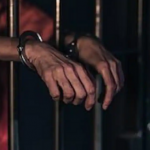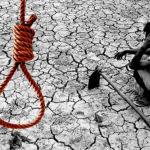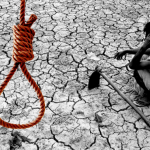Sep 26, 2020 | Uncategorized
Everyone faces a crisis at some point in their lives. But what happens when crisis dominates your professional life? At that very moment, you really want to rewind the time because you don’t want to experience those strong and conflicting emotions, tensions and anxiety, but that’s quite impossible. Isn’t it?
How do I protect my brand? Yes, I understand in the digital era where a little spark becomes fire in a very shorter time becomes very tough to handle the crisis. You don’t want your brand to be bad mouthed. You want to shut all of them immediately. And so, you take some quick action to save your brand reputation. Your impulsiveness makes things more complicated for you and it will take a lot of time to cover that damage, maybe a year or two or your whole life. The mess of your wrong turn makes you more insane this time.
Now are thinking what would you do if you don’t take immediate action? The first and foremost thing is to be calm when the crisis knocks your door, don’t let it fall apart. Sit back and relax, If I am telling you to be relaxed, so I am talking about 100 percent relaxation here, so the chaos doesn’t ruin your inner peace. Because that’s all you need in a crisis.
5 W & H (What, When, Where, Who, Why and How ) will help you to study the case. Make your CMP(crisis management plan) accordingly to minimize the damage. Now it is a time for you to respond to the crisis but before that, it becomes really important to understand the nature of your crisis because it is the only way to mute those loud voices. I know that communication is key getting through all the crisis. But in some situation, it only becomes noise where silence becomes the loudest voice. So I suggest you use your..
Sep 25, 2020 | Uncategorized
It is said that, of all the things you choose in life, you don’t get to choose what your nightmares are! The same can be said for the prisoners who were sentenced to the cellular jail of Andaman and Nicobar. The punishment of being a prisoner in this jail or Kalapani ki saza as it was called, was a nightmare come to life. People who know about this prison still get goosebumps while thinking about it. Let’s have a look at why it is called the cruelest punishment.
Kalapani punishment was started by the British in India in the Cellular Jail located in the Port Blair City of Andaman. One look at this prison will tell you how difficult it would have been to live in it, and Indian freedom fighters were especially kept in these jails.
Notably, the prisoners here were kept in total isolation with no contact with each other. The prison had a separate cell for every prisoner. The loneliness was the most frightening punishment for the prisoners sentenced here. A total of 698 cells were built in seven branches and there was no bedroom in any of them. Each closet was 15 × 8 feet. The prisoner of one cell could not contact the prisoner of the other cell in any way.
The construction of the jail was started in 1896 and completed in 1906. The boundary walls of this prison were so small that one can easily cross it. But with deep seawater framing all the sides, the prisoners had no way of escape.
The Britishers used to keep most of India’s freedom fighters in Kalapani. Vinayak Damodar Savarkar, Bhai Parmanand, Maulana Fazl-e-Haq Khairabadi, Maulana Ahmadullah, Movli Abdul Rahim Sadiqpuri, Yogendra Shukla, Batukeshwar Dutt, Babarao Savarkar, Shadan Chandra Chatterjee, Sohan Singh, and many more fighters were kept here. This prison was made a national monument in 1969. The Government of India opened Govind Vallabh Pant Hospital here in 1963. Presently, it is a 500-bed hospital.
This was the story of that dreadful prison, which is also called as the hell on earth. This prison bears the symbol of the atrocities committed on the Indian freedom fighters by Britishers.
For other interesting news related to jail, keep reading troopel.com
Sep 24, 2020 | Uncategorized
Politicians are the representatives of the general public, who are selected by the people through the voting system. They symbolize the will of people and what they want from the government. They work to provide the facilities given by the government to the public. But, do all the facilities reach the public? The answer will be no because, instead of working for the public, they work for themselves. It is quite disheartening to see that around 99 percent of the political leaders today have deviated from their path of serving the public and chose the path of corruption. Corruption has become an unavoidable part of politics and now and then, one or the other politician re-affirms this fact.
Below are some of the names of politicians who are found corrupted and are sentenced to jail.
Lalu Prasad Yadav
A special CBI court in Ranchi found Lalu Prasad Yadav, the leader of the Rashtriya Janata Dal and former Chief Minister of Bihar, guilty in the fodder scam. After which he was sentenced to five years in jail and was also fined Rs 5 lakh.
Suresh Kalmadi
On April 25, 2011, the CBI arrested Suresh Kalmadi on the charge of the Commonwealth scam and was sent to the largest jail in the country. Kalmadi was arrested on charges of fraud, conspiracy, and corruption in sports awards. Kalmadi was sent to Tihar in early 2012 after spending 9 months in jail in Delhi.
Kanimozhi
Kanimozhi, the daughter of DMK leader and M Karunanidhi, was arrested on 20 May 2011. Her arrest was ordered by a special CBI court in Delhi. Kalaignar TV CEO, Sharad Kumar was also arrested along with Kanimozhi. Kanimozhi was sent to Tihar Jail. Kanimozhi then appealed for bail, stating that she is a woman and the mother of two children which was granted to her by the Delhi High Court on 28 November 2011.
BS Yeddyurappa
It was an embarrassing time for the BJP when BS Yeddyurappa, who became the first Chief Minister from the party in South India, had to go to jail. The court rejected his bail plea and ordered his arrest. Yeddyurappa was arrested on 15 October 2011. While he allegedly has several corruption cases lying against him, he was sent to jail because of his alleged involvement in the illegal iron ore export scam in various districts of Karnataka. He was sent to the hospital on 16 October due to chest pain. He then returned to prison on the 17th and was again admitted to another hospital the same evening. He was released on 8 November 2011 after spending 25 days in jail.
Bangaru Laxman
Bangaru Laxman, a former Bharatiya Janata Party (BJP) president, was convicted under the Prevention of Corruption Act in the 2001 Tehelka Sting case. He was convicted for taking bribes from a fake arms dealer to recommend to the defense ministry to award them a contract to supply thermal binoculars to the Army. He was sentenced to four years in prison.
Mahipal Maderna
Rajasthan’s sacked Water Resources Minister, Mahipal Maderna was arrested by the CBI on December 3, 2011, in the Bhavani Devi missing case. A CD related to the case was revealed after which, the state government ordered a CBI investigation. The CBI arrested Mahipal Maderna and Congress MP Malkhan Singh in December last year for their alleged involvement in the case. Maderna and Singh were shifted outside the Jodhpur Jail following a government order.
Amar Singh
On September 6, 2011, Rajya Sabha MP and former Socialist leader Amar Singh was sent to 13 days of judicial custody in the Cash for Vote scam case. Two other accused, with Amar Singh, were sent to judicial custody till 19 September for arrest. Afterward, the Tis Hazari court extended his internal bail till 19 September.
R. Balakrishna Pillai
V Balakrishna Pillai, a veteran Kerala Congress leader and seven-time MP, was sentenced to one-year rigorous imprisonment by the Supreme Court in a corruption case in February 2011. He was released on November 1, 2011, under a waiver by the state government.
Susanta Ghosh
Susanta Ghosh, leader of the Communist Party of India-Marxist and former West Bengal minister, was arrested by the CBI in connection with the skeletal recovery case. He was detained in the 2011 Ajay Acharya murder case. His son had lodged an FIR after Acharya’s skeleton was found. 7 skeletons were found in a field pit near Ghosh’s ancestral home in Bencharpa in West Midnapore district.
Bibi Jagir Kaur
Bibi Jagir Kaur, the head of the Shiromani Gurdwara Prabandhak Committee (SGPC), was sentenced to five years of rigorous imprisonment. Kaur was found guilty of kidnapping, forcible abortion, and the mysterious death of her daughter. However, she was later acquitted of the murder charge. Kaur was sent to Patiala Jail. She later demanded to be transferred to Kapurthala Jail, which was approved.
Sukhram
In the government of PV Narasimha Rao, Telecom Minister and Lok Sabha MP from Mandi in Himachal Pradesh, Sukhram was accused of corruption. The CBI recovered cash worth Rs 3.6 crore in bags and suitcases from Sukhram’s former residence in 1996. In 2002, the Delhi court found him guilty and sentenced to three years of rigorous imprisonment. The Supreme Court upheld the ruling on 18 November 2011 and sentenced Sukhram to 5 years in jail.
For other interesting news related to jail, keep reading troopel.com
Sep 23, 2020 | Uncategorized
India is an agrarian country with most of its population depending directly or indirectly on the farmers for livelihood and food consumption. However, this sector has been experiencing a lot of crisis since the past few decades, most of which include the increasing rate of farmer’s suicide in the country. Farming in India is a profession filled with many financial uncertainties. Most of the farmers in India do not have enough money to run their livelihood or send their children to schools. To meet the basic needs of their families, they have to take loans from the banks.
Even after producing food for the country, farmers find themselves in huge debts. They need money to service their loans, fund the next agricultural season, and support their family. Hence, they take fresh loans. The debt cycle continues. Loan recovery processes may be initiated, and these are often unethically aggressive, even bordering on the criminal. Without any hope or a way out, farmers commit suicide to end their problems and pain.
Most farmers in India commit suicide due to increasing debt, lack of irrigation and farming facilities, profit failure in cultivation, high input cost, climate change, and other factors leading to the ruin of crops. According to statistics, since 1995, 2, 96,438 farmers have committed suicide.
Significantly, since 2013, the government has been collecting the statistics of farmers’ suicides. According to this, every year, 12 thousand farmers end their lives. Neck deep in debts, they are unable to bear the agriculture losses. According to the government, in 2015, a total of 12,602 people, directly or indirectly related to agriculture committed suicide. Of these, 8,007 were farmers while 4,595 people were working as agricultural laborers. Out of the total 1, 33,623 suicide cases in India in 2015, 9.4 percent were the farmers who killed themselves.
In 2015, Maharashtra recorded the highest number of suicides by 4,291 farmers, while Karnataka stood second with 1,569 suicides. It is followed by Telangana (1400), Madhya Pradesh (1,290), Chhattisgarh (954), Andhra Pradesh (916), Tamil Nadu (606). The number of farmers who committed suicide in 2013 was 11,772 and in 2014 were 12,360.
The data given here clearly shows the situations the food giver of the country is facing. The people and the country need to wake up and support them to ease their problems. How will a country survive without its food producer?
For other news related to the farmers, keep reading troopel.com
Sep 23, 2020 | Uncategorized
India is an agrarian country with most of its population depending directly or indirectly on the farmers for livelihood and food consumption. However, this sector has been experiencing a lot of crisis since the past few decades, most of which include the increasing rate of farmer’s suicide in the country. Farming in India is a profession filled with many financial uncertainties. Most of the farmers in India do not have enough money to run their livelihood or send their children to schools. To meet the basic needs of their families, they have to take loans from the banks.
Even after producing food for the country, farmers find themselves in huge debts. They need money to service their loans, fund the next agricultural season, and support their family. Hence, they take fresh loans. The debt cycle continues. Loan recovery processes may be initiated, and these are often unethically aggressive, even bordering on the criminal. Without any hope or a way out, farmers commit suicide to end their problems and pain.
Most farmers in India commit suicide due to increasing debt, lack of irrigation and farming facilities, profit failure in cultivation, high input cost, climate change, and other factors leading to the ruin of crops. According to statistics, since 1995, 2, 96,438 farmers have committed suicide.
Significantly, since 2013, the government has been collecting the statistics of farmers’ suicides. According to this, every year, 12 thousand farmers end their lives. Neck deep in debts, they are unable to bear the agriculture losses. According to the government, in 2015, a total of 12,602 people, directly or indirectly related to agriculture committed suicide. Of these, 8,007 were farmers while 4,595 people were working as agricultural laborers. Out of the total 1, 33,623 suicide cases in India in 2015, 9.4 percent were the farmers who killed themselves.
In 2015, Maharashtra recorded the highest number of suicides by 4,291 farmers, while Karnataka stood second with 1,569 suicides. It is followed by Telangana (1400), Madhya Pradesh (1,290), Chhattisgarh (954), Andhra Pradesh (916), Tamil Nadu (606). The number of farmers who committed suicide in 2013 was 11,772 and in 2014 were 12,360.
The data given here clearly shows the situations the food giver of the country is facing. The people and the country need to wake up and support them to ease their problems. How will a country survive without its food producer?
For other news related to the farmers, keep reading troopel.com






